By Persephonie Cole
The Cockrell School of Engineering is a place of innovation, dedicated research and discovery. While the allure of the latest scientific journal or research report definitely calls to us, nothing scratches the reading itch quite like a good book. And who better to recommend a book for engineers than, well, engineers?
We hit the offices, the labs and the email inboxes of our world-class engineering faculty to find out what books have sparked joy or made an impact on how they view the world of engineering. From Tom Yankeelov’s whimsical, musical take on penguins to Fernanda Leite’s experience with the power of thought and habits, there is something for every reader on this list.
This curated selection of titles includes both fiction and non-fiction, the serious and the silly and, perhaps, your next paradigm-shifting read. Choose your own adventure by listening to the book club picks or reading along to these recommendations that have inspired engineering thought leaders across the Forty Acres.
The Existential Pleasures of Engineering
by Samuel C. Florman
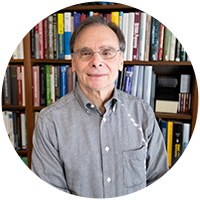
Florman does a superb job of helping all of us understand the breadth and scope of engineering in a way that follows a linear path from the builders of the ancient world to the modern day. Most practitioners would describe engineering as the art or science of making practical application of knowledge of pure science. The book does not make an attempt to describe what engineers do, but rather how engineers think and feel about what they do and, more generally, what it means to be an engineer.
—Jonathan Bard
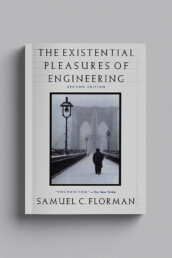
Read by: Tayler Edwards, chemical engineering, junior
The Watershed
by Arthur Koestler
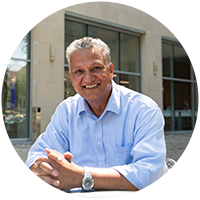
Without minimizing so many other impactful and interesting books, the one that comes to mind is ‘The Watershed’ by Arthur Koestler (extracted from his larger 1960 book called ‘The Sleepwalkers’). Koestler tells the story of Johannes Kepler, his person, his personality, and his study of planetary motion based on Tycho Brahe’s observations. It comprehensively and very readably describes ‘who knew what and when’ en route from Kepler to Newton’s foundation of mechanics and modern physics. Koestler shows wonderful fluency in the use of the English language — he paints an amazing picture of Kepler’s and Brahe’s personalities and how they connect to their work, which appeals to my particular interest in getting our students to exploit the full power of language in their work. Kepler’s two-decade-long obsession (a word used justifiably) with his failure to explain Brahe’s observations of Mars within only a few arc-seconds — which led him to propose elliptical instead of circular motion for planets — is indeed a watershed moment for science that Koestler masterfully builds up to and describes. This is an important lesson for modern students, who are using powerful new data science (AI/ML) methods to connect abundant observations to physical theories — while Feynman and others have been well-quoted with respect to the connection between data and understanding, Kepler was the original data scientist. A careful reading of this book guides us towards being careful and thus good scientists.
— Srinivas Bettadpur
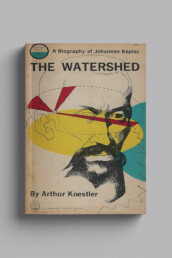
Read by: Mizan Pervaiz, aerospace engineering, senior
Kane and Abel
by Jeffrey Archer
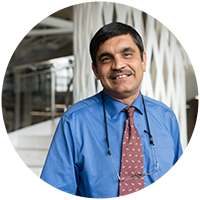
I would recommend the fictional novel ‘Kane and Abel.’ Written by Jeffrey Archer, and released in 1979/1980, it discusses the life of two men who could not be more different, except for having the same date of birth. One of them (William Kane) is born into a rich family in the U.S., while the other (Abel Rosnovski) is born into poverty in Poland. The emotional story discusses the triumphs and tribulations of an immigrant (Abel) as he arrives in the U.S., and the competitive spirit that drives both Kane and Abel. A touching story of how each helps the other unknowingly, while being arch business rivals. The clincher for me was how Kane’s son and Abel’s daughter fall in love and get married, celebrating the notion that where we originate from or how we look is immaterial — we all are human beings, with our own emotions and feelings. As an immigrant myself, this novel touched me. I can only hope that we all can get along with each other and treat each other with kindness and love, wherever we are in the world.
— Chandra Bhat
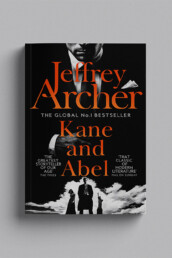
Read by: Tayler Edwards, chemical engineering, junior
Thunderstruck
by Erik Larson
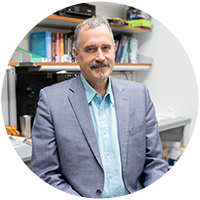
Larson is a premier writer of non-fiction who is nevertheless able to make his books into very readable stories. This one tells the story of the great Guglielmo Marconi, inventor of wireless communication — wireless telegraphy, to be specific — and his remarkable quest to send wireless messages across the Atlantic Ocean. In the background is the story of the famous murderer Hawley Harvey Crippen. He ties the times together, and Crippen is apprehended because of Marconi’s technology as he tries to escape to America by boat from London. It certainly affects me since Marconi is the father of wireless, and I am a founding member and current contributor to WNCG and 5G@UT.
— Al Bovik
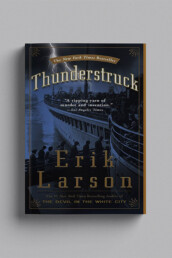
Read by: Al Bovik, electrical and computer engineering, professor
Fundamentals of Industrial Problem Solving: A Practitioner’s Guide
by Zdravko Stefanov, Eldad Herceg, Carla Schmidt, David M. Jacobson, Dana Livingston, J.P. Chauvel, Sunil Kumar Chaudhary, Christopher Paul Christenson
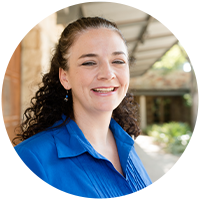
The authors are experts in industrial problem solving and distill decades of experience in solving real-world engineering problems into a structured problem-solving method that readers can adopt. By providing examples of complex, multi-factor problems and strategies for how to tackle them, the book provides a wealth of learning opportunities on how to build on the fundamentals taught in our classrooms to make a real impact. My father is one of the authors based on his distinguished four-decade career with The Dow Chemical Company as a corporate fellow, and it was wonderful to see many of the lessons that I have learned most of my life in print (e.g. first define success).
— Elizabeth Cosgriff-Hernández
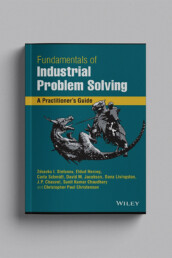
Read by: Mizan Pervaiz, aerospace engineering, senior
The Making of the Atomic Bomb
by Richard Rhodes
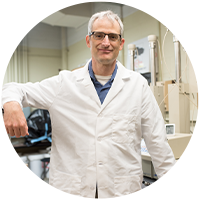
This is a fantastic book that underlies all of the physics and engineering that went into the making of the atomic bomb. It details the incredible discoveries in physics that happened at the turn and the beginning of the 20th century. Even as a physicist, learning about the timeline and the nuances of these scientific discoveries was illuminating. For example, I finally understood why Bohr was such a physics giant. Radioactivity, the nucleus, the Bohr atom, quantum mechanics and the neutron, were all groundbreaking and led up to the discovery of nuclear fission. With the discovery of fission, it was immediately apparent that tremendous energies could be released in a nuclear reaction, and the second half of the book talks about the engineering and organization and race against Nazi Germany to make this happen. A genuine tour de force of a book that gives the science and engineering behind the movie Oppenheimer.
— David DiCarlo
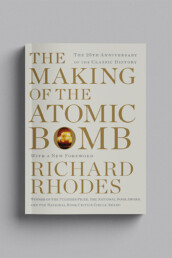
Read by: Tayler Edwards, chemical engineering, junior
Barren Lands: An Epic Search for Diamonds in the North American Arctic
by Kevin Krajick

Who doesn’t love a good treasure hunt story? Diamonds are found in very specific parts around the globe, and geologic evidence suggests that there should be one of these spots somewhere in the Northwest Territories in the Canadian shield. This book tells the story of how one small group of geologists beat out the huge de Beers cartel in following the correct geologic clues. Some geology, some drama, and lots of luck.
— David DiCarlo
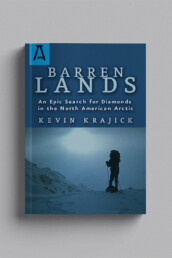
Read by: Tayler Edwards, chemical engineering, junior
Einstein’s Dreams
by Alan Lightman
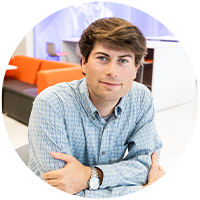
One year in high school, my English teacher gave me a copy of Einstein’s Dreams and told me something to the effect of ‘I can tell you’ll be a scientist or an engineer someday. I bet you’ll like this better than Shakespeare.’ He was right! Einstein’s Dreams is a collection of fictional vignettes, each one a dream that Albert Einstein might have had while working on the theory of relativity.
— David Fridovich-Keil
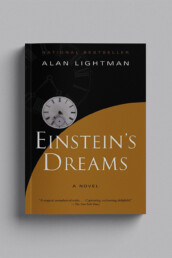
Read by: Mizan Pervaiz, aerospace engineering, senior
How Big Things Get Done
by Bent Flyvbjerg and Dan Gardner
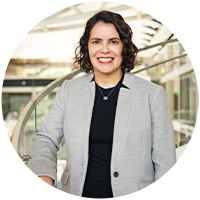
The book ‘How Big Things Get Done,’ by Bent Flyvbjerg and Dan Gardner, explores the principles behind successful project management, emphasizing the importance of strategic planning, risk management and stakeholder alignment. This book offers valuable insights into managing large-scale initiatives and fostering innovation. It advocates for a systematic approach to project execution, focusing on clear objectives, realistic timelines and strong stakeholder engagement to navigate the complexities of large undertakings effectively. These principles have come in handy as I have transitioned into the ADR role, having to juggle multiple large, complex projects simultaneously.
— Fernanda Leite
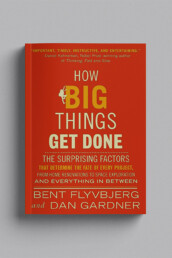
Read by Fernanda Leite, associate dean for research
Atomic Habits
by James Clear

‘Atomic Habits’ is a really good book about how minor tweaks in your day-to-day life can have a significant impact on your overall life and well-being and productivity. And I’ll give an example of how I implemented what I learned from that book in my day-to-day life. I’m a natural early riser, so I tend to wake up at about 5:30 a.m. every day. If I could wake up just 10 to 15 minutes earlier, that would give me enough time to get to the gym for a 6 a.m. class. And by getting that workout done first thing in the morning, it sets my day up for success. I feel like I can conquer anything if I can get done with that gym class and do all that weightlifting and rope climbing, whatever it may be. I can get anything done if I can get through that, so that was a minor tweak of my schedule that makes me feel so much better, not just physically but mentally as well.
— Fernanda Leite
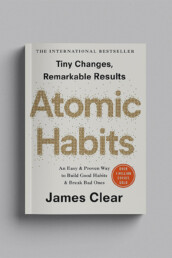
Read by Fernanda Leite, associate dean for research
Deep Work
by Cal Newport

‘Deep Work’ is another great book that I like to recommend to my students. And I like to talk about it with my students because it focuses on the fact that as human beings, we’re not naturally meant to be multitasking and dealing with a lot of the stimuli that we get we get every day with all of the access that we have in social media and people texting us all the time and all those dings and interruptions. That interrupts our thought process when we’re trying to work through a difficult problem or to work through a writing task. So, in recognition that it’s difficult for us as humans to focus when we have all the stimuli, we just need to be able to better protect the time we need to do that focused work or that deep work.
— Fernanda Leite
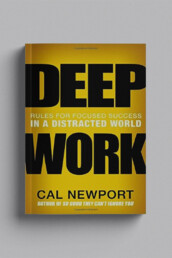
Read by Fernanda Leite, associate dean for research
The Singularity is Nearer: When We Merge with AI
by Ray Kurzweil

’The Singularity Is Nearer: When We Merge with AI’ (2024) by Ray Kurzweil is a follow-up to his earlier work, ‘The Singularity Is Near’ (2005), where Kurzweil explored the idea that technological advancements, particularly in artificial intelligence (AI), biotechnology, and nanotechnology, will lead to a “singularity”—a point where human and machine intelligence merge and surpass human biological limitations. In his new book, Kurzweil expands on these predictions, offering updates based on recent developments in fields like AI, genetics, and neuroscience. He continues to argue that exponential technological growth will lead to radical transformations, including longer lifespans, the enhancement of human cognitive abilities, and the eventual merging of humans with machines. My research on bio-integrated electronics contributes to this vision by digitizing the human body through tissue-like wearable and implantable electronics. Our recent NSF EFRI Award on neuron soft brain-computer interfaces is an example of it.
— Nanshu Lu
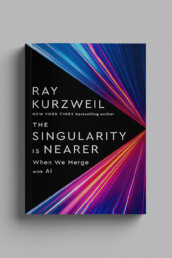
Read by: Nanshu Lu, aerospace engineering and engineering mechanics, professor
The Discovery of Insulin
by Michael Bliss
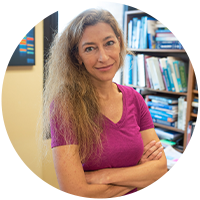
I love both this book and ‘The Mold in Dr. Flory’s Coat’ by Eric Lax because they are not just about the scientific discovery of molecules with therapeutic potential but tell the full story of how large teams of scientists and engineers managed to produce the massive quantities of these drugs needed to treat patients in just a few years. Insulin was discovered over 100 years ago to become the first biologic therapy and overnight completely changed the prognosis for diabetics. Equally important, insulin has served as a model for the development of future therapeutics and how to leverage new technologies to make a better treatment, like long-acting or inhaled insulin. When I read this story, I thought, ‘This is exactly why I do the research I do,’ because of the hope that our proteins may also help people live better lives.
— Jennifer Maynard
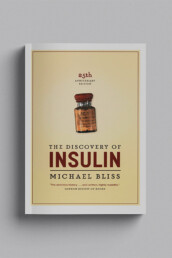
Read by: Jessie Ho, advertising, junior
Klara and the Sun
by Kazuo Ishiguro

Ishiguro, a 2017 Nobel Prize winner, excels at extrapolating from current science and technology innovations to what the future may look like and the implications for what it means to be a human. In this book, which is perfectly timed for a post-pandemic world in which artificial intelligence has a growing presence, many engineering jobs have been eliminated due to ‘redundancy,’ and children rarely leave their homes, but learn from professors on iPads. To provide social interactions, ‘Artificial Friends,’ robot-like machines governed by AI, have been created and live with families. Klara is one such friend and the story is told from her perspective as she tries to understand her world, protect and care for her human charge — and ultimately may be the most human character in the book. As we watch AI at UT grow in power and independence, I will be thinking of Klara to see if it also gains a heart.
— Jennifer Maynard
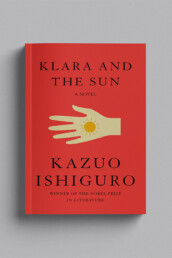
Read by: Mizan Pervaiz, aerospace engineering, senior
Technopoly: The Surrender of Culture to Technology
by Neil Postman
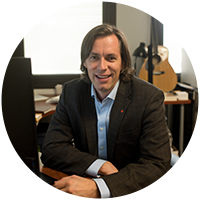
As I conduct my research, I often find the words of Professor Postman from his book, ‘Technopoly: The Surrender of Culture to Technology,’ echoing in my mind. He reminds us that the technologies we develop as scientists will often have profound and often unforeseen impacts on society. We might be tempted to argue, ‘I understand my technology and how it will be used! I can foresee its impact and mitigate any downsides!’ But despite our confidence, Dr. Postman’s caution remains: ‘Once a technology is admitted, it plays out its hand; it does what it is designed to do.’ This serves as a humbling reminder that, in the end, we have limited control over the course our inventions will take and we must proceed with care.
— Michael Pyrcz
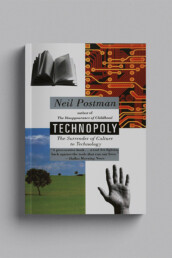
Read by: Nat Levy, Cockrell School, editorial manager
The Three-Body Problem
by Cixin Liu
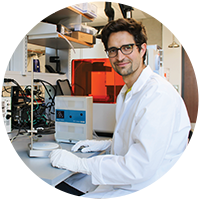
’The Three-Body Problem’ by Cixin Liu is an exciting mix of science fiction and big ideas that, I bet, engineering students will find intriguing. The story revolves around the complex challenge of predicting the movements of three celestial bodies, which ties into chaos theory and orbital mechanics — concepts that engineering students might encounter in their studies. The novel is packed with scientific details and explores advanced technology, making it feel both imaginative and realistic. Our students might enjoy how the characters approach problem solving and think critically about science and technology, while also reflecting on the ethical and practical implications of human advancement and contact with alien life.
— Manuel Rausch
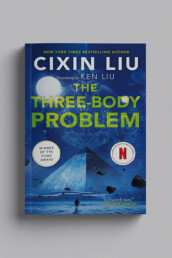
Read by: Nat Levy, Cockrell School, editorial manager
The Brain That Changes Itself
by Norman Doidge
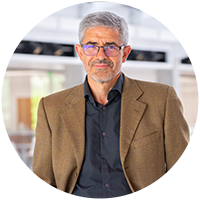
As the preface says, this book is about the revolutionary discovery that the human brain can change itself, as told through the stories of patients who recovered from supposedly ‘incurable’ brain problems, scientists and doctors. This natural property of the brain to change structure and function through activity and thought — brain plasticity — launched me, the neuroengineer and aspirational neurologist, in the quest for technologies that can drive brain plasticity to recover lost function or repair malfunctioning brain networks.
— José del R. Millan
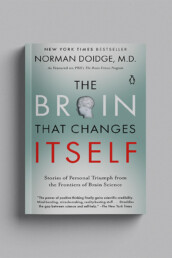
Read by: Nat Levy, Cockrell School, editorial manager
What the Dog Saw and Other Adventures
by Malcolm Gladwell

Malcolm Gladwell is one of my favorite authors, known for his popular books like ‘The Tipping Point,’ ‘Blink’ and ‘Outliers.’ However, a less recognized work of his that I thoroughly enjoyed is ‘What the Dog Saw and Other Adventures,’ a collection of essays covering diverse topics. I was initially drawn to this book because I expected it to be an engaging read — Gladwell’s talent for weaving small ideas into larger narratives is remarkable. As an animal lover, I was particularly intrigued by the essay ‘What the Dog Saw,’ where Gladwell begins with Cesar Millan, the famous ‘dog whisperer,’ and his distinct dog training methods. He then broadens the discussion to explore themes of human behavior, communication, and relationships. Gladwell connects Millan’s techniques to how people interact with one another, emphasizing the role of non-verbal communication, the impact of calm and assertive energy on group dynamics, and the importance of understanding basic needs in relationships. This book has significantly shaped my approach to teaching, inspiring me to pay closer attention to non-verbal cues and the core needs of my students, ultimately fostering a more compassionate and effective learning environment.
— Nina Telang
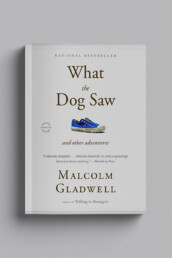
Read by: Nina Telang, electrical and computer engineering, professor of instruction
American Prometheus: The Triumph and Tragedy of J. Robert Oppenheimer
by Kai Bird and Martin J. Sherwin
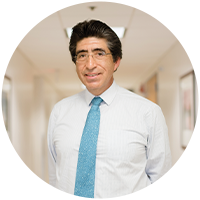
J. Robert Oppenheimer’s biography is masterfully penned and profusely researched by Kai Bird and Marin J. Sherwin. It conflates the unique scientific, ethical, and historical contexts of a truly exceptional American physicist. Oppenheimer’s cultural and social upbringing serendipitously places him on the path of discovery of quantum mechanics and of its unexpected consequences in the design, fabrication and detonation of the first ever nuclear bomb during the twilight of World War II. His wide intellect and social interests, exceptional intelligence and charismatic scientific leadership catapulted the Los Alamos scientific team under his tutelage to the remarkable time-ticking success of the Trinity nuclear bomb test. But Oppenheimer’s pre-war Communist connections, his pent-up remorse for catalyzing the nuclear arms race, and his activism toward stopping the international proliferation of nuclear arms inexorably put him on a direct collision course with opposing minds in the Eisenhower-McCarthy administration. As a sad consequence, he was arbitrarily and quixotically rescinded his top security clearance and disgracefully defrocked of his various governmental functions, all because of his open and public criticism of the nuclear arms race. This is an unfortunate end and a highly unethical social compensation to a brilliant mind that gave his best years and his greatest intellect and abilities to solving a highly challenging scientific/engineering problem sorely needed to stem the alleged nuclear threat by the nefarious Nazi regime. Oppenheimer’s experience is but one lucid, yet tragic, example of how a runaway government system can destroy a national scientific hero beyond his own self-doubts, deprecations, and personal sorrows.
— Carlos Torres-Verdin
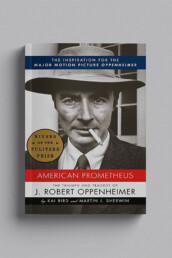
Read by: Carlos Torres-Verdin, petroleum and geosystems engineering, professor
Tacky the Penguin
by Helen Lester
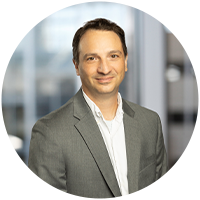
The book I would like to recommend to my fellow Texas engineers is called ‘Tacky the Penguin’ by Helen Lester. ‘Tacky the Penguin’ is a story about a penguin named Tacky. Tacky loves to have fun and be funny, but the other penguins view him as different and he is not appreciated or accepted by them. But when danger approaches, Tacky’s skills turn out to be the ones that save the day. I love this book because Margie and I spent many hours reading it to our children when they were tiny. It was a cute and fun way to teach them about loving and appreciating everyone in all their differences and, furthermore, that those differences can be the very things that light the way forward. Club Yankeelov offers ‘Tacky the Penguin’ its highest and most enthusiastic recommendation.
— Tom Yankeelov
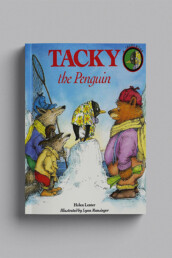
Read by: Tom Yankeelov, biomedical engineering, professor
Kane and Abel
by Jeffrey Archer
American Prometheus: The Triumph and Tragedy of J. Robert Oppenheimer
by Kai Bird and Martin J. Sherwin
The Discovery of Insulin
by Michael Bliss
Atomic Habits
by James Clear
The Brain That Changes Itself
by Norman Doidge
The Existential Pleasures of Engineering
by Samuel C. Florman
How Big Things Get Done
by Bent Flyvbjerg and Dan Gardner
What the Dog Saw and Other Adventures
by Malcolm Gladwell
Klara and the Sun
by Kazuo Ishiguro
The Watershed
by Arthur Koestler
Barren Lands: An Epic Search for Diamonds in the North American Arctic
by Kevin Krajick
The Singularity is Nearer: When We Merge with AI
by Ray Kurzweil
Thunderstruck
by Erik Larson
The Mold on Flory’s Coat
by Eric Lax
Tacky the Penguin
by Helen Lester
Einstein’s Dreams
by Alan Lightman
The Three-Body Problem
by Cixin Liu
Deep Work
by Cal Newport
Technopoly: The Surrender of Culture to Technology
by Neil Postman
The Making of the Atomic Bomb
by Richard Rhodes
Fundamentals of Industrial Problem Solving: A Practitioner’s Guide
by Zdravko Stefanov, Eldad Herceg, Carla Schmidt, David M. Jacobson, Dana Livingston, J.P. Chauvel, Sunil Kumar Chaudhary, Christopher Paul Christenson
Follow Us
To learn more about what our faculty are up to, follow us on LinkedIn.